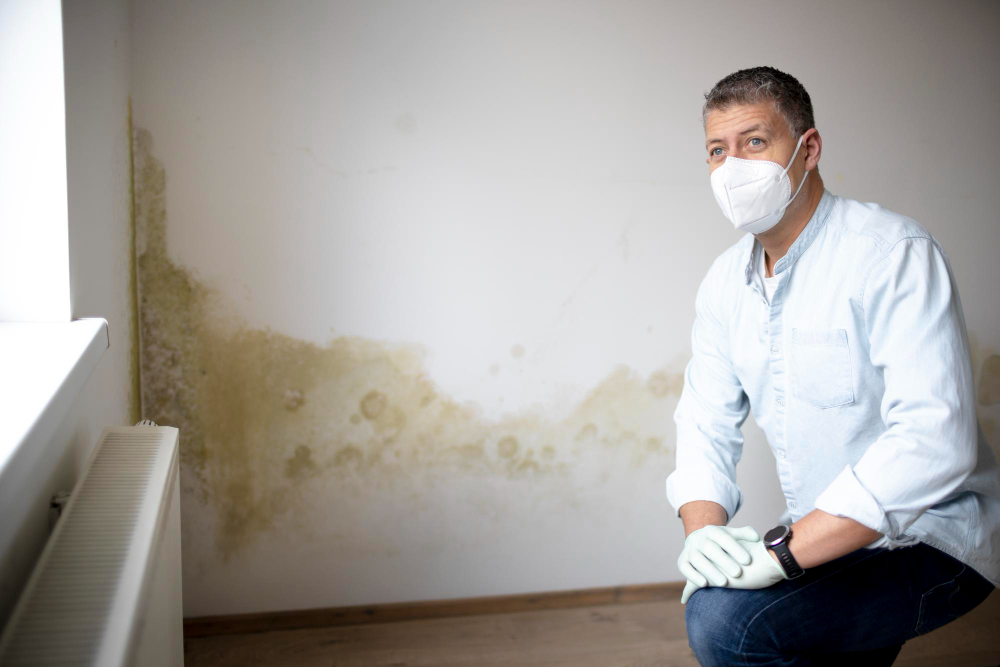The Role of Mold Testing in Keeping Kansas City Homes Safe and Healthy
Mold might not always be visible, but it can be one of the most persistent problems homeowners face—especially in regions...

Mold might not always be visible, but it can be one of the most persistent problems homeowners face—especially in regions with humid summers and fluctuating temperatures like Kansas City. Conducting mold testing in Kansas City is crucial to ensuring that homes remain safe, healthy, and structurally sound. Mold can grow silently behind walls, beneath floors, or in basements, releasing spores that affect both the air quality and the integrity of your home. Understanding how mold testing works, what inspectors look for, and how findings can impact your property and health is essential for every homeowner.
In this blog, we’ll explore the importance of mold testing, what the process involves, and the implications of various findings that might emerge during a mold inspection. By the end, you’ll have a clear understanding of how mold testing contributes to maintaining a healthy living environment in Kansas City homes.
Why Mold Is a Major Concern in Kansas City Homes
Kansas City’s climate creates the perfect breeding ground for mold. The region’s mix of warm, humid summers and damp, chilly winters means that moisture can easily become trapped in walls, attics, crawl spaces, and basements. When humidity levels stay high for prolonged periods, mold spores can multiply rapidly.
Moisture intrusion from heavy rainfall, plumbing leaks, or poor ventilation further increases the risk. Once mold takes hold, it not only damages materials like drywall and wood but also releases airborne spores that affect indoor air quality. Prolonged exposure can lead to respiratory irritation, allergic reactions, and in severe cases, chronic health conditions.
That’s why homeowners and buyers alike rely on mold testing in Kansas City — it’s not just about spotting surface mold but identifying hidden sources that could compromise the health of occupants and the structure of the property.
Understanding Mold Testing and Its Purpose
Mold testing is a specialized process designed to detect the presence, type, and concentration of mold spores in a building. While visual inspections can identify obvious mold colonies, testing provides scientific data that helps determine the extent of contamination and the potential impact on air quality.
There are generally two main goals of mold testing:
- Confirming the Presence of Mold:
If there are visible signs of mold growth or a musty odor, testing verifies whether the growth is indeed mold and identifies the specific species present. - Assessing Airborne Mold Levels:
Even when mold isn’t visible, airborne spores can circulate through HVAC systems and settle on surfaces. Air testing measures spore counts to determine if the indoor environment is within safe limits.
Types of Mold Testing Methods Used
There are several methods used for mold testing in Kansas City homes. Each technique provides unique insights, and a combination of tests often gives the most accurate results.
1. Air Sampling
This method collects air samples from different areas of the home using a specialized pump. The samples are analyzed in a laboratory to measure mold spore concentrations and identify the types of mold present. Air sampling helps detect hidden mold growth and assess how far spores have spread through the house.
2. Surface Sampling
Inspectors collect samples from walls, floors, or other surfaces showing discoloration or suspected mold growth. Swab or tape samples help confirm whether visible spots are mold and determine the species involved.
3. Bulk Sampling
In bulk testing, pieces of material—like drywall or insulation—are removed and analyzed in a lab. This method provides detailed information about mold growth within materials and helps determine how deeply it has penetrated.
4. Moisture Mapping
While not a mold test itself, moisture mapping identifies areas where mold is likely to grow. Using infrared cameras and moisture meters, inspectors locate hidden leaks and damp zones that may foster future growth.
Each method provides valuable data that, when combined, gives a comprehensive picture of a home’s mold situation.
Common Causes of Mold Growth in Kansas City Homes
Mold thrives wherever moisture is present, and Kansas City homes often face multiple contributing factors. Some of the most common causes include:
- Roof Leaks:
Damaged shingles or flashing can allow rainwater to seep into the attic, where it stays trapped in insulation and wood framing. - Poor Ventilation:
Without proper airflow, humidity levels rise in kitchens, bathrooms, and basements, creating perfect conditions for mold spores to spread. - Plumbing Leaks:
Slow, unnoticed leaks behind walls or under sinks are one of the leading causes of hidden mold growth. - Flooding:
Whether from storms or plumbing issues, floodwater can saturate floors, carpets, and drywall, leading to long-term mold problems if not properly dried. - Condensation:
In older Kansas City homes, temperature differences between indoor and outdoor air can cause condensation on windows, walls, or pipes—another opportunity for mold to develop.
What Inspectors Look for During Mold Testing
During mold testing in Kansas City, inspectors look for more than just visible mold. They perform a thorough assessment that includes:
- Moisture Detection: Identifying leaks or damp areas using moisture meters.
- Air Quality Measurements: Collecting air samples to determine mold spore counts.
- Visual Inspections: Checking walls, ceilings, attics, crawl spaces, and HVAC systems for signs of growth or staining.
- Humidity Readings: Measuring indoor humidity levels to ensure they’re below the recommended 50% threshold.
- Source Identification: Determining where mold is originating from—be it leaks, condensation, or inadequate ventilation.
Each step helps determine the extent of the problem and whether remediation is needed.
The Implications of Mold Testing Findings
The results of a mold test can have significant implications for both the home’s condition and the health of its occupants. Let’s look at what different findings might mean.
1. Elevated Mold Spore Counts
If lab results show higher-than-normal mold spore concentrations, it’s a sign that there’s an active mold source within the home. High levels can contribute to allergy symptoms, asthma flare-ups, or other respiratory issues. In such cases, identifying and eliminating the source becomes a priority.
2. Specific Mold Species Identified
Some types of mold are more hazardous than others. For instance, Stachybotrys chartarum (commonly called black mold) is known for producing mycotoxins that can cause serious health effects. Identifying the mold species helps determine the urgency and method of cleanup required.
3. Widespread Contamination
If testing reveals mold throughout the HVAC system or across multiple rooms, it suggests that spores have circulated through the air ducts. This requires a more extensive remediation process, including duct cleaning and improving ventilation.
4. Hidden Mold Sources
Sometimes, tests indicate mold even when no growth is visible. This usually points to hidden colonies behind walls, under floors, or within insulation. In such cases, targeted removal of affected materials is often necessary.
5. Low or Normal Mold Levels
A result showing low mold levels means the home’s air quality is within acceptable limits. However, homeowners should still monitor humidity levels and fix leaks promptly to prevent future problems.
How Mold Affects Indoor Air Quality
Mold spores are microscopic and lightweight, allowing them to stay airborne for long periods. Once in the air, they can be inhaled easily, especially in poorly ventilated spaces. Here’s how they impact indoor air quality:
- Respiratory Irritation: Mold spores can trigger coughing, wheezing, and throat irritation.
- Allergic Reactions: People with mold allergies may experience sneezing, runny noses, and itchy eyes.
- Asthma Triggers: For those with asthma, mold exposure can cause frequent flare-ups or worsen symptoms.
- Musty Odors: Mold produces volatile organic compounds (VOCs) that give off unpleasant, musty smells, indicating poor air quality.
Improving air circulation, controlling humidity, and conducting regular mold testing can greatly reduce these risks.
Steps Homeowners Can Take to Prevent Mold Growth
While mold testing identifies current problems, prevention is the long-term solution. Homeowners can take several proactive steps to keep mold at bay:
- Control Indoor Humidity:
Use dehumidifiers and exhaust fans to keep humidity below 50%. - Fix Leaks Quickly:
Even minor plumbing or roof leaks should be repaired immediately to prevent moisture buildup. - Ensure Proper Ventilation:
Make sure attics, crawl spaces, and bathrooms have adequate airflow. - Use Mold-Resistant Materials:
During renovations, consider mold-resistant drywall and paint. - Regular Inspections:
Periodically check basements, windows, and HVAC systems for moisture or mold signs. - Clean and Dry After Flooding:
If your home floods, dry all affected areas within 24–48 hours to stop mold from forming.
Why Regular Mold Testing Matters
Even if your home appears clean and dry, unseen moisture or minor leaks can still cause problems over time. Regular mold testing in Kansas City ensures that early signs of mold growth are detected before they turn into expensive repairs or health issues. Testing is particularly important:
- After flooding or water damage
- When buying or selling a home
- If household members experience unexplained respiratory symptoms
- Following HVAC or roof repairs
By scheduling periodic tests, homeowners can maintain a safe indoor environment and protect both their property and family health.
The Bottom Line
Mold may be a natural part of our environment, but it doesn’t belong inside our homes. Kansas City’s variable weather patterns make mold growth an ongoing concern for homeowners, renters, and buyers alike. Through professional mold testing in Kansas City, residents can uncover hidden mold sources, assess air quality, and take informed steps toward creating a safer, healthier living space.
A clean, dry, and well-ventilated home not only supports good health but also preserves the property’s structural integrity. By understanding how mold testing works and what its results mean, homeowners can make confident decisions that ensure their home remains a healthy place to live for years to come.




